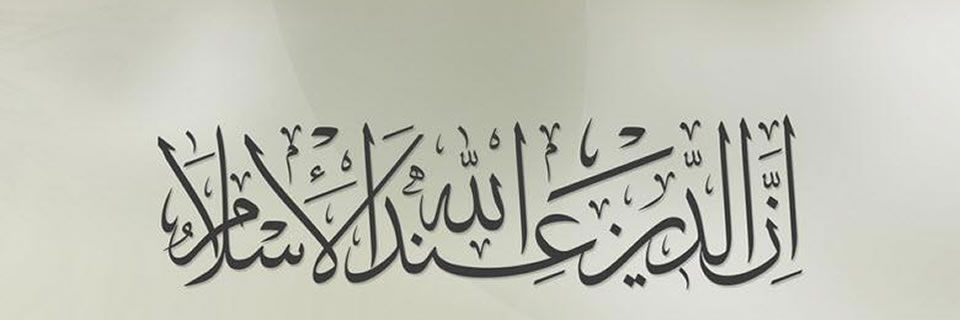Seeratul Mustafaa (326)
The Incident of Hazrat Buraidah Aslami (radhiyallahu ‘anhu)
Written by user2After meeting Hazrat Suraaqah bin Maalik (radhiyallahu ‘anhu), Rasulullah (sallallahu ‘alaihi wasallam) and his companions continued on the journey of hijrah. As they proceeded ahead, Buraidah Aslami, was also searching for Rasulullah (sallallahu ‘alaihi wasallam) with seventy other riders, just as Hazrat Suraaqah (radhiyallahu ‘anhu) had been searching for Rasulullah (sallallahu ‘alaihi wasallam). Buraidah Aslami also desired to acquire the reward of one hundred camels offered by the Quraish for capturing or killing Rasulullah (sallallahu ‘alaihi wasallam).
The Incident of Hazrat Suraaqah bin Maalik (radhiyallahu ‘anhu)
Written by user2When Rasulullah (sallallahu ‘alaihi wasallam) and Hazrat Abu Bakr (radhiyallahu ‘anhu) departed from Makkah Mukarramah on the occasion of the hijrah, the Quraish publicly announced that if any person kills or captures Muhammed (sallallahu ‘alaihi wasallam) or Abu Bakr (radhiyallahu ‘anhu), then for each of the two, he will receive the reward of one hundred camels.
Suraaqah bin Maalik narrates:
“I was sitting in my usual place when a man came up to me and said, “I saw a few people departing along the coastal route. I feel that these people are Muhammed (sallallahu ‘alaihi wasallam) and his companions.”
Suraaqah continues:
“I knew, in my heart, that these people were definitely Muhammed and his companions. However, since I feared that this person, or some other person who heard this information, may acquire the reward from the Quraish, I delayed him by saying the following, “The people you saw were not Muhammed (sallallahu ‘alaihi wasallam) and his companions – they were some other people,”
Meeting Hazrat Ummu Ma’bad (radhiyallahu ‘anha) During the Journey of Hijrah
Written by user2On leaving the cave of Thowr, Rasulullah (sallallahu ‘alaihi wasallam) set out on the road to Madinah Munawwarah. En route to Madinah Munawwarah, Rasulullah (sallallahu ‘alaihi wasallam) passed the tent of Ummu Ma’bad.
Ummu Ma’bad was a remarkably noble and incredibly hospitable woman. She would often sit at the entrance of her tent.
Those accompanying Rasulullah (sallallahu ‘alaihi wasallam) on the journey approached her to purchase some dates and meat, but she had nothing to offer them. The blessed gaze of Rasulullah (sallallahu ‘alaihi wasallam) fell on the tent, and he noticed a young goat in the corner of the tent. Rasulullah (sallallahu ‘alaihi wasallam) enquired, “How is this goat?” Ummu Ma’bad replied, “This goat is frail and weak. This is why it is unable to graze with the rest of the flock out in the fields.”
Summary of the Departure of Rasulullah (sallallahu ‘alaihi wasallam) from Makkah Mukarramah
Written by user2On the night when the Quraish intended to assassinate Rasulullah (sallallahu ‘alaihi wasallam), Rasulullah (sallallahu ‘alaihi wasallam) left his home and went straight to the home of Hazrat Abu Bakr (radhiyallahu ‘anhu). Rasulullah (sallallahu ‘alaihi wasallam) took Hazrat Abu Bakr (radhiyallahu ‘anhu) as his companion, and the two of them went into hiding in the cave of Thowr.
In the meantime, the disbelievers surrounded his home, but when they discovered that he was not there, they began to search for him. They sent search parties in every direction to search for Rasulullah (sallallahu ‘alaihi wasallam). While searching, some disbelievers eventually came to the mouth of the cave, but Allah Ta‘ala used the web of a spider to give them such protection that even a hundred coats of armour could not provide.
Rasulullah (sallallahu ‘alaihi wasallam) remained hidden in the cave for three days. Hazrat Abdullah (radhiyallahu ‘anhu), the son of Hazrat Abu Bakr (radhiyallahu ‘anhu), would spend the day in Makkah Mukarramah, gathering information about the disbelievers. In the evenings, he would come to the cave and give Rasulullah (sallallahu ‘alaihi wasallam) and Hazrat Abu Bakr (radhiyallahu ‘anhu) a detailed report of the happenings in Makkah. He would thereafter depart for Makkah in the early morning.
Receiving the Divine Protection of Allah Ta‘ala in the Cave
Written by user2After Rasulullah (sallallahu ‘alaihi wasallam) and Hazrat Abu Bakr (radhiyallahu ‘anhu) entered the Cave of Thowr, Allah Ta‘ala caused a spider to spin a web across the entrance of the cave.
The Quraish surrounded the home of Rasulullah (sallallahu ‘alaihi wasallam) the entire night. The following morning, when they saw Hazrat Ali (radhiyallahu ‘anhu) awaken from the bed of Rasulullah (sallallahu ‘alaihi wasallam), they were surprised and enquired from him regarding the whereabouts of Rasulullah (sallallahu ‘alaihi wasallam). Hazrat Ali (radhiyallahu ‘anhu) replied, “I do not know where he is.”
The Love and Devotion of Hazrat Abu Bakr (radhiyallahu ‘anhu) for Rasulullah (sallallahu ‘alaihi wasallam)
Written by user2Rasulullah (sallallahu ‘alaihi wasallam) and Hazrat Abu Bakr (radhiyallahu ‘anhu) both left home during the night and set out for the cave of Thowr.
As Rasulullah (sallallahu ‘alaihi wasallam) proceeded towards the cave, then Hazrat Abu Bakr (radhiyallahu ‘anhu), who was decreed to be his companion in the cave, and who was his devoted disciple, his dedicated companion, his sincere devotee, and his incomparable friend, was overcome with a strange sense of restlessness. Hence, at times, he would walk behind Rasulullah (sallallahu ‘alaihi wasallam), and sometimes in front of him. At times, he would walk on his right, and sometimes to his left.
On the occasion of the hijrah, when Rasulullah (sallallahu ‘alaihi wasallam) was departing from Makkah Mukarramah, he ascended a small hill, looked towards Makkah Mukarramah and said:
وَاللّٰه إِنَّكِ لَخَيْرُ أَرْضِ اللّٰهِ وَأَحَبُّ أَرْضٍ إِلَى اللّٰهِ وَلَوْلَا أَنِّيْ أُخْرِجْتُ مِنْكِ مَا خَرَجْتُ
“By Allah! (O Makkah Mukarramah!) You are the best of Allah’s lands, and You are the most beloved of lands to Allah! If I was not expelled from you, I would never have left you!”
Allah Ta‘ala Saving Rasulullah (sallallahu ‘alaihi wasallam) from the Plot of the Quraish
Written by user2The chieftains of the Quraish had taken the decision, after holding a meeting in Daar-un-Nadwah, that they would assassinate Rasulullah (sallallahu ‘alaihi wasallam) that very night.
When night arrived, and darkness spread across the land, then as decided, the Quraish surrounded Rasulullah’s (sallallahu ‘alaihi wasallam) house, planning to attack him when he exits his home. Rasulullah (sallallahu ‘alaihi wasallam) instructed Hazrat Ali (radhiyallahu ‘anhu) saying, “Wear my green shawl and lie down on my bed. Do not fear, as no harm will come to you.”
Hazrat Abu Bakr (radhiyallahu ‘anhu) Accompanying Rasulullah (sallallahu ‘alaihi wasallam) on the Hijrah
Written by user2Hazrat Ali (radhiyallahu ‘anhu) reports that Rasulullah (sallallahu ‘alaihi wasallam) asked Hazrat Jibreel (‘alaihis salaam), “Who will accompany me on the journey of hijrah?” Hazrat Jibreel (‘alaihis salaam) replied, “Abu Bakr (radhiyallahu ‘anhu) will accompany you.”
More...
Hazrat Jibreel (‘alaihis salaam) Informing Rasulullah (sallallahu ‘alaihi wasallam) of the Plot of the Quraish
Written by user2After assembling in Daar-un-Nadwah and discussing their predicament in regard to Rasulullah (sallallahu ‘alaihi wasallam), the chieftains of the Quraish eventually decided that the solution was to assassinate Rasulullah (sallallahu ‘alaihi wasallam). On arriving at this decision, they concluded their meeting and dispersed.
The Assembly of the Quraish in Daar-un-Nadwah and their Resolution to Assassinate Rasulullah (sallallahu ‘alaihi wasallam)
Written by user2When the Quraish realised that gradually, all the Sahaabah (radhiyallahu ‘anhum) had migrated to Madinah Munawwarah, and the departure of Rasulullah (sallallahu ‘alaihi wasallam) was also imminent, then a number of the chieftains of the Quraish convened in Daar-un-Nadwah to discuss this ‘predicament’.
Among the chieftains of the Quraish who gathered in Daar-un-Nadwah were: Utbah bin Rabee’ah, Shaibah bin Rabee’ah, Abu Sufyaan bin Harb, Tu’aimah bin Adi, Jubair bin Mut’im, Haarith bin Aamir, Nadhr bin Haarith, Abul Bakhtari bin Hishaam, Zam’ah bin Aswad, Hakeem bin Hizaam, Abu Jahal bin Hishaam, Nabeeh and Munabbih – the two sons of Hajjaaj, Umayyah bin Khalaf, etc.
The Sahaabah (radhiyallahu ‘anhum) who Performed Hijrah
Written by user2When Hazrat Umar (radhiyallahu ‘anhu) performed hijrah to Madinah Munawwarah, then the following Sahaabah (radhiyallahu ‘anhum) joined him in the journey of hijrah:
Hazrat Zaid bin Khattaab (i.e. Hazrat Umar’s elder brother), Hazrat Amr bin Suraaqah and Hazrat Abdullah bin Suraaqah (the sons of Suraaqah), Hazrat Khunais bin Huzaafah Sahmi, Hazrat Sa’eed bin Amr bin Nufail, Hazrat Waaqid bin Abdillah Tameemi, Hazrat Khawlaa bin Khawlaa, Hazrat Maalik bin Abi Khawlaa, and the four sons of Bukair; Hazrat Iyaas, Hazrat Aamir, Hazrat Aaqil and Hazrat Khaalid (radhiyallahu ‘anhum).
Rasulullah (sallallahu ‘alaihi wasallam) Reciting the Qunoot for Hazrat Ayyaash bin Abi Rabee‘ah (radhiyallahu ‘anhu)
Written by user2When Hazrat Umar (radhiyallahu ‘anhu) and Hazrat Ayyaash bin Abi Rabee‘ah (radhiyallahu ‘anhu) arrived in Madinah Munawwarah, Abu Jahal bin Hishaam and his brother, Haarith bin Hishaam (i.e. Abu Jahal’s brother who later embraced Islam), travelled to Madinah Munawwarah.
They came to Hazrat Ayyaash (radhiyallahu ‘anhu) and said to him, “Your mother has vowed that as long as she does not lay eyes on you, she will neither comb her hair nor will she take shade from the sunshine.” Hearing this, the eyes of Hazrat Ayyaash (radhiyallahu ‘anhu) were filled with tears and he agreed to return to Makkah with Abu Jahal.






